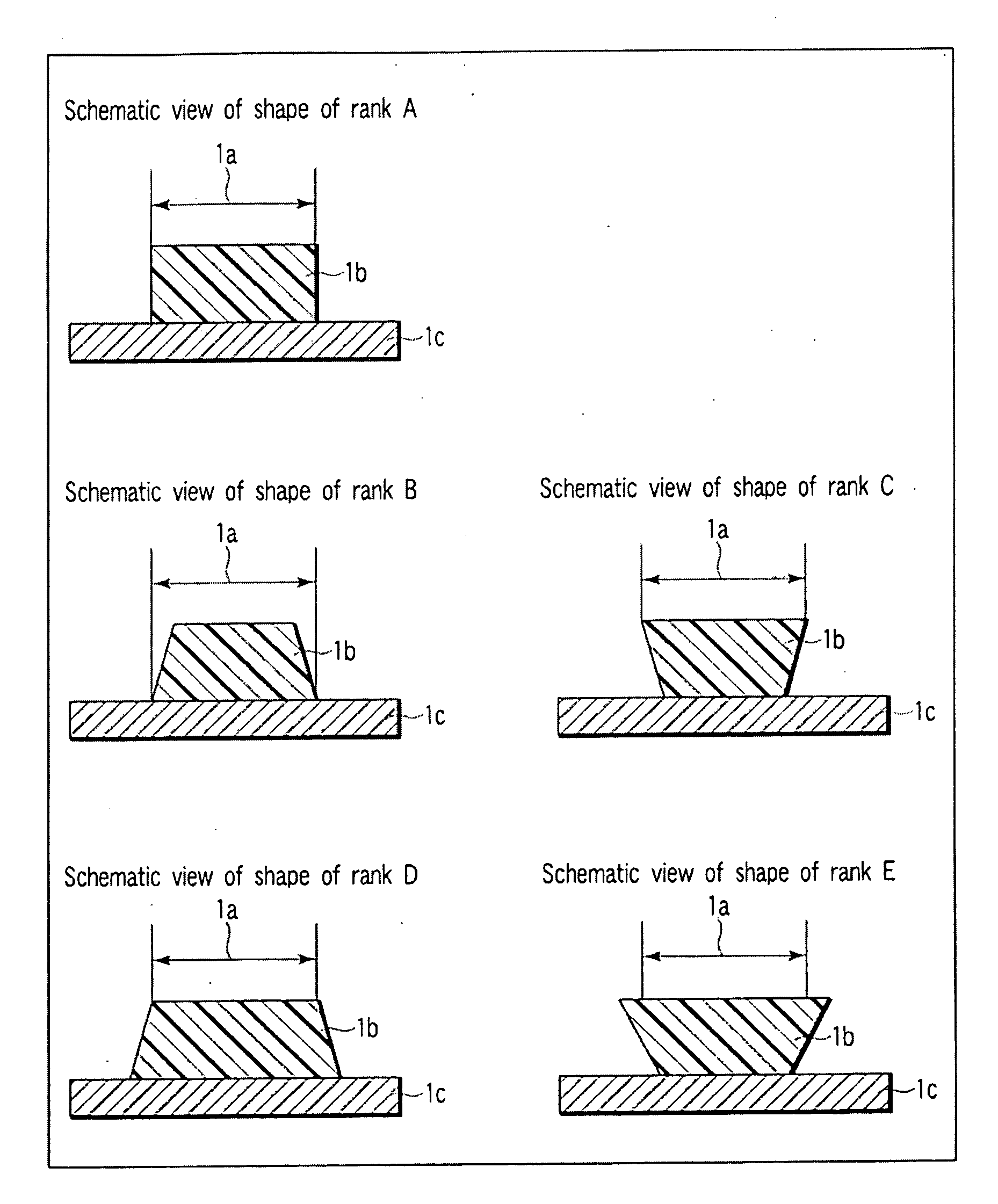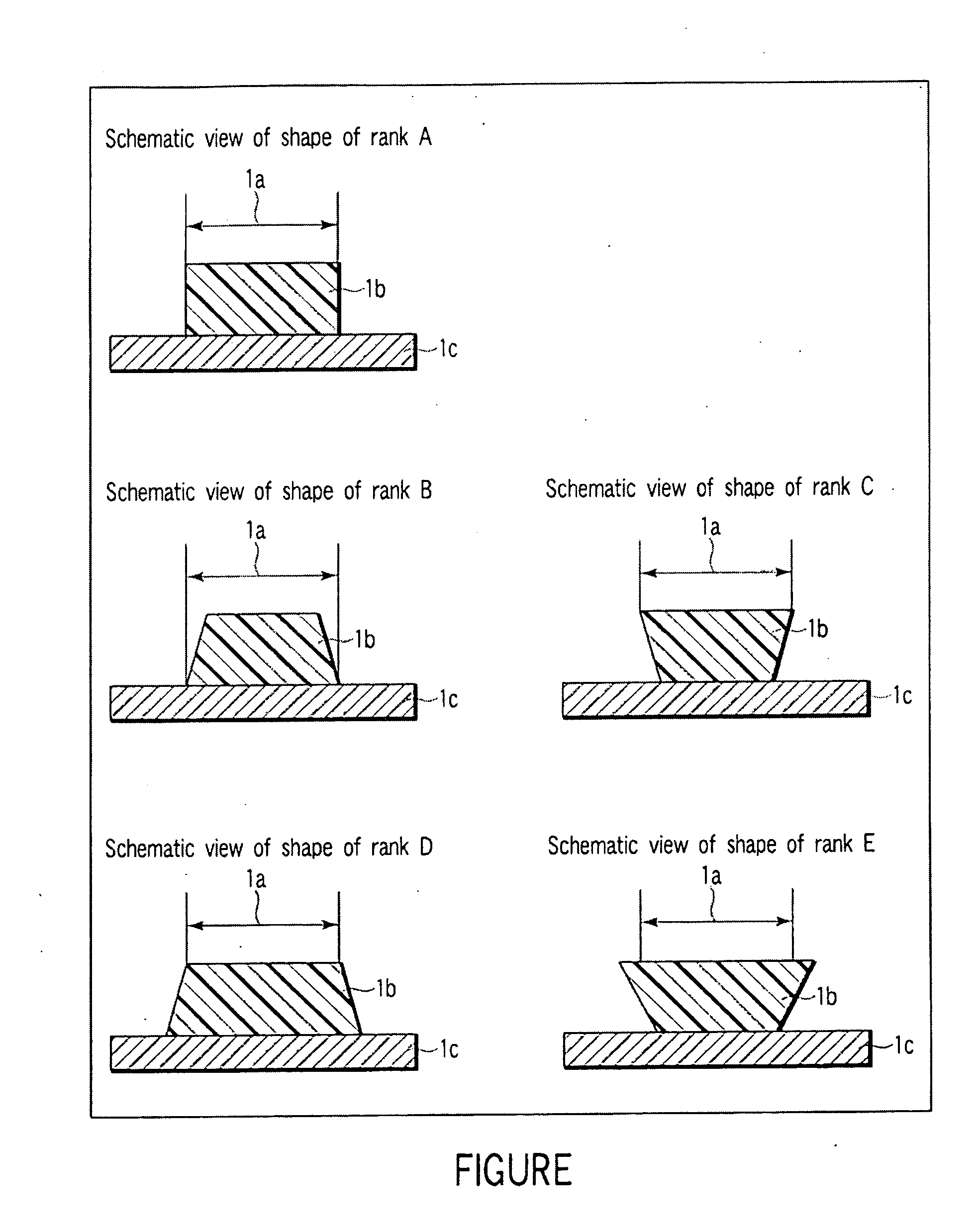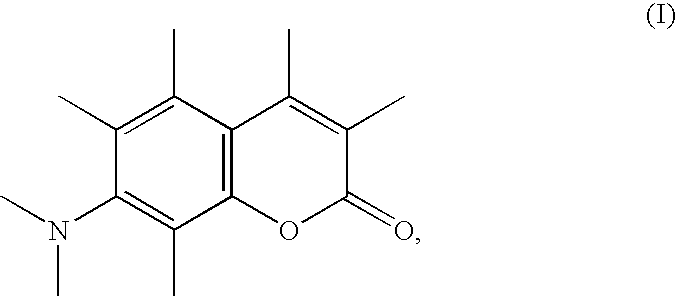Photocurable and thermosetting resin composition, cured product thereof, and printed wiring board obtained by using the same
- Summary
- Abstract
- Description
- Claims
- Application Information
AI Technical Summary
Benefits of technology
Problems solved by technology
Method used
Image
Examples
example 1
Preparative Example 1
[0080]In a 2-liter separable flask equipped with a stirrer, a thermometer, a condenser tube, a dropping funnel and a nitrogen-supplying tube, placed were 660 g of a cresol novolak type epoxy resin (EOCN-104S, manufactured by Nippon Kayaku Co., Ltd., softening point 92° C., epoxy equivalence: 220), 421.3 g of carbitol acetate, and 180.6 g of a solvent naphtha, and the mixture was stirred under heat of 90° C. until solubilization. The mixture was then cooled to 60° C.; 216 g of acrylic acid, 4.0 g of triphenylphosphine, and 1.3 g of methylhydroquinone were added thereto; and the mixture was allowed react at 100° C. for 12 hours, to obtain a reaction product having an acid value of 0.2 mgKOH / g. 241.7 g of tetrahydrophthalic anhydride was added thereto, and the mixture was heated to 90° C. and allowed to react at the same temperature for 6 hours, to obtain a solution of a carboxylic acid-containing resin (A) having an acid value of 50 mgKOH / g, a double bond equivale...
example 2
Preparative Example 2
[0081]In a 2-liter separable flask equipped with a stirrer, a thermometer, a condenser tube, a dropping funnel and a nitrogen-supplying tube, placed were 430 g of an o-cresol novolak type epoxy resin (epoxy equivalence: 215, average six phenol rings in one molecule) and 144 g (2 moles) of acrylic acid. The mixture was heated to 120° C. while stirred, and allowed to react at the same temperature for 10 hours. The reaction product was cooled to room temperature; 190 g (1.9 moles) of succinic anhydride was added thereto; and the mixture was heated to 80° C. and allowed to react for 4 hours. The reaction product was cooled again to room temperature. The solid product had an acid value of 139 mgKOH / g.
[0082]5.2 g (0.6 mole) of glycidyl methacrylate and 45.9 g of propylene glycol methyl ether acetate were added to the solution, and the mixture was heated to 110° C. while stirred and allowed to react at the same temperature for 6 hours. The reaction product was cooled t...
example 3
Preparative Example 3
[0083]In a 2-liter separable flask equipped with a stirrer, a thermometer, a condenser tube, a dropping funnel and a nitrogen-supplying tube, placed were 215 parts of a cresol novolak type epoxy resin Epiclon N-680 (manufactured by Dainippon Ink and Chemicals, Inc., epoxy equivalence: 215) and 266.5 parts of carbitol acetate, and the mixture was dissolved under heat. 0.05 part of hydroquinone and 1.0 part of triphenylphosphine were added to the resin solution as the polymerization inhibitor and the reaction catalyst, respectively. The mixture was heated to 85 to 95° C.; 72 parts of acrylic acid was added gradually; and the mixture was allowed to react for 24 hours. 208 parts of half urethane, previously prepared in reaction of isophorone diisocyanate and pentaerythritol triacrylate at a molar ratio of 1:1, was added to the epoxy acrylate gradually dropwise, and the mixture was allowed to react at 60 to 70° C. for 4 hours. The epoxy urethane acrylate varnish thus...
PUM
| Property | Measurement | Unit |
|---|---|---|
| Thickness | aaaaa | aaaaa |
| Thickness | aaaaa | aaaaa |
| Nanoscale particle size | aaaaa | aaaaa |
Abstract
Description
Claims
Application Information
 Login to View More
Login to View More - R&D
- Intellectual Property
- Life Sciences
- Materials
- Tech Scout
- Unparalleled Data Quality
- Higher Quality Content
- 60% Fewer Hallucinations
Browse by: Latest US Patents, China's latest patents, Technical Efficacy Thesaurus, Application Domain, Technology Topic, Popular Technical Reports.
© 2025 PatSnap. All rights reserved.Legal|Privacy policy|Modern Slavery Act Transparency Statement|Sitemap|About US| Contact US: help@patsnap.com



